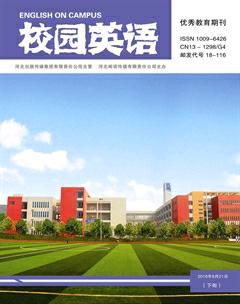Multi—modal Discourse Analysis of Peng Liyuan’s Dress
顾伟红
【Abstract】Traditional discourse analysis basically focuses on language rather than non-linguistic symbol resources in terms of meaning construction. The latter emerging multi-modal discourse analysis breaks this limitation into a large extent. This paper analyzed Peng Liyuans dress with semiotics of Saussure and visual grammar of Kress and Van Ixeuwen as theoretical framework.
【Key words】multi-modal discourse analysis; dress; semiotics; visual grammar
1. Introduction
Multi-modal discourse refers to the one combining various communication modes to convey information. In other words, it consists of language texts, images, graphs, and any symbolic coding able to convey meaning (Li Zhanzi 2003). As for multi-modal discourse analysis, it is built on the basis of social semiotics, Systemic-Functional Grammar, and visual grammar. Halliday contributed to semiotic Systemic-Functional Grammar (1995). Kress and Leeuwen extended idea of meta-function to visual model, and created visual grammar.
From the perspective of semiotics, dress serves as one kind of non-linguistic symbols, involving three signifiers, namely the syle, color and fabric. Taking Chinas First Lady Peng Liyuans dress as an example, this paper attempts to explore how various non-linguistic symbols jointly construct the signified meaning of discourse by their own unique ways under the framework of semiotics and visual grammar, in order to achieve scheduled diplomatic purpose.
2. Multi-modal discourse analysis of Pengs dress
2.1 Signified meaning of different modeling of dress
During diplomatic visits, Peng Liyuans modeling of dress varies according to the exact place, time, and event. When she first visited Russia, she wore a blue tweed coat. Later she dressed herself in a brocade coat to deliver a speech in Moscow Institute of International Relations, and khaki suit to attend the Russian chorus. After Russia, she visited Tanzania in cover gown with a purple embroidery scarf. Generally speaking, her dress is a business card both for her and for China.
For example, the brocade coat she wore in Moscow Institute of International Relations carries many traditional Chinese symbols, including orchid, bamboo, plum, and magpie. The signified meaning of orchid in Chinese culture is noble and dignity. The meaning of bamboo is honesty and fair, that of plum is firm and indomitable. As for the magpie, it stands for good luck and forecasts good news, showing her best wishes for Russian friends.
2.2 Signified meaning of different colors of dress
In this aspect, the signifier is the color and the signified meaning is the psychological effect it brings to the audience. Within Peng Liyuans dress, she pays attention to the combination of colors in the dress itself, as well as that of color and outside occasions. On the one side, she is fond of combining extreme colors or the mediate colors with extreme colors, such as the deep blue coat with light blue scarf, or coffee dress with purple scarf. On the other side, she is well acknowledged of the combination of color and local custom. For example, she dressed herself in mediate colors to visit Russia, a military power, and wears white coat and dress while visiting Tanzania, an African country.
2.3 Signified meaning of different fabrics of dress
The fabrics of Peng Liyuans dress ranges a lot, from cotton, linen, silk to wool, featuring ethnic elements. Visually, these fabrics are gentle, grave, comfortable, and environmental friendly. At the same time, silk is frequently used whether in her scarf or gown. The signified meaning of silk is Chinese traditional style and national pride, since it started in 4700 years ago in ancient China and remains popular in modern China, even the whole world.
3. Conclusion
The colors of Pengs dress vary from one occasion to another, but all of them are appropriate for the exact event and place. And the fabrics of her dress signify traditional Chinese style and reveals her pride in native culture. Tested by visual grammar, modeling contributes to the realization of representation function, color promotes the interaction function, and the combination of all symbols is crucial to the achievement of composition function. In other words, these three non-linguistic symbols jointly construct the signified meaning of discourse by their own unique ways, and successfully achieve diplomatic intention.
References:
[1]Halliday,M.A.K.1995.An Introduction to Functional Grammar [M].London:Edward Arnold.

